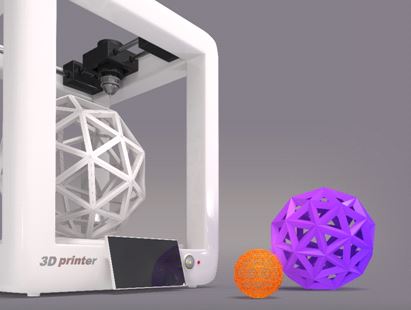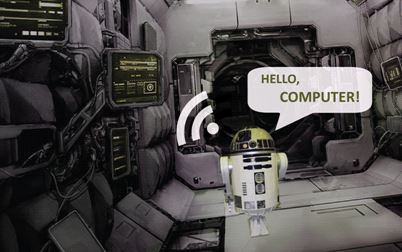About 20 years ago, I decided I need a new career path. And so I moved to marketing after doing about five years of software engineering, Quality Assurance, and IT. At that point in time, one of my friends in the engineering team said, welcome to the dark side! Most of my engineering co-workers, in fact, advised me against it.
The nice thing about the dark side (read, marketing) though is that it’s starting to see shimmers of light. Marketing has evolved into a science with the widespread adoption of marketing automation tools, big data and analytics.
I continue to remain an engineer at heart, and as CMO, I love having conversations with the supremely talented engineers I work with – often, they convert into passionate discussions – and sometimes, into heated debates.
Recently, I had a very interesting discussion with our engineering wizards at Aryaka, after an unsurprisingly well-attended screening of the original Star Wars trilogy at the company’s headquarters. The discussion was about how modern cutting-edge technology trends like advanced robotics, AI, nanotechnology, next-gen communications, etc. could have been featured in the earlier movies.
Here’s what we came up with – the top 5 technologies that Star Wars failed to predict, according to Aryaka’s awesome engineers:
1. Robots & Artificial Intelligence
In a universe filled with interstellar space travel, force fields, and faster-than-light communication, the use of robots in any defense arm would be a given, right?
Well, in the original trilogy, the Galactic Empire used an army of clones instead. This move is flimsily explained away in The Attack of the Clones, by claiming that human clones are more creative than robots in their decision-making.

An army of human clones: Image Credit: af8images/shutterstock.com
That’s not entirely accurate, though.
In as far back as 1997, when Garry Kasparov - the reigning world chess champion at the time - was defeated by IBM’s chess-playing computer Deep Blue, he was “spooked” by the machine’s “unexpected creativity”. While this incident might point towards a very restricted view of a machine’s potential for creative thinking, it’s not a hard push to imagine that robots with advanced Artificial Intelligence (AI) might, one day, exhibit human-like behaviors and creativity. As a matter of fact, even in the Star Wars universe, there are instances of robots with AI, like R2D2, that have time and again shown extraordinary presence of mind (through machine-learning) in saving the day.
This raises a few questions. Why were the B-1 battle droids of the prequels so utterly dumb? How difficult would it really be to put R2D2’s “brain” in mass-produced droids?
Also, there is little sense in anyone building a robot as rigid and inflexible as C3PO (except for, perhaps, comic relief), especially when relatively nimble robots exist even today.

Illustration of MIT’s Cheetah Robot: Image Credit: maisak dzmitry /shutterstock.com
In any case, going against a robot army of R2D2s and flexible C3POs would make a compelling story for sure!
2. High-Quality Holograms and the HoloNet
Hologram technology seen in the Star Wars movies clearly leaves a lot to be desired. The holograms were always grainy, as if they were recorded on old VHS tapes. Today, in an age of lossless compression and storage, this just wouldn’t make sense.
Today, the technology to create moving 3D holographic displays has come a long way. Tupac Shakur’s dramatic holographic rebirth at Coachella in 2012 was leaps and bounds beyond those grainy images of Princess Leia.
Beyond image quality, holographic technology has been evolving rapidly in other interesting ways. Japanese scientists have created a plasma-based hologram that can be touched and felt. The day isn’t far away when you might shake hands with the hologram of a far-flung business colleague during a virtual cross-continental meeting!

Shaking hands with a holographic business colleague: Image Credit: wavebreakmedia /shutterstock.com (modified)
In the Star Wars universe, however, holograms seem to be inspired by images from 1950’s antennae-based television sets located in remote suburbs.
Perhaps, the fault lies in the mode of transport of holograms across the galaxy? The network for data transfer would surely have its task cut out, considering the fact that holograms are bulky real-time applications that require high bandwidths (analogous to Video and VoIP in our current era).
Holograms in Star Wars are transmitted over the HoloNet, which, in many ways, is a cloud-based network solution, not unlike what we, at Aryaka, have built to transport mission-critical enterprise data across oceans.
Information is picked up by the nearest hyperwave transceiver and travels faster-than-light through hyperspace tunnels to the transceiver nearest to the listener, resulting in near-instantaneous communication.
Today, Aryaka uses WAN Optimization techniques to provide blazing fast file transfers and application performance, for all kinds of traffic including voice, video and data. It’s not hard to imagine that the Galactic Republic could use similar principles to improve their Holographic traffic. If we can do it, an advanced future civilization surely could!
3. Virtual reality
In the Star Wars universe, floating droids with limited intelligence called “remotes” are used to train young Jedi (and Luke Skywalker) in the use of lightsabers. Also, their eyes are covered during these exercises to teach them to trust their instincts more than their eyes.
Here’s the problem. These remotes look more like drones, but drones are not and probably won’t be used in this way.
Why? Because this type of training would make more sense in a virtual world.
Today, Virtual Reality technology has manifested itself primarily for gaming applications, led by Oculus VR – a company acquired by Facebook for a whopping $2 billion. The experience offered by company’s Virtual Reality headset can be so realistic that some users get motion sickness even after stopping gameplay.

Virtual Reality Module: Image Credit: Nawanon /shutterstock.com
Another interesting piece of technological innovation that boosts the potential of Virtual Reality devices is a contact lens developed by Google that has a camera and a control circuit embedded in it. The wearer’s field of view is transmitted wirelessly to an external viewing device for others to see what he/she is seeing. With anticipated improvements in nanotechnology and optical projection technology, it won’t be long before nano-computers could be embedded into contact lenses, which could project images into the wearer’s field of view.
By scaling down Oculus Rift-like Virtual Reality modules into such contact lenses, people would soon be capable of walking around seemingly unhindered, while experiencing an alternate, customizable world of their own.

Virtual Reality experienced through contact lenses: Image Credit: Africa Studio /shutterstock.com
This form of virtual reality technology would certainly be used by defense forces around the world for training their soldiers, without the use of bulky, poor-quality simulators. Ditto, for the Star Wars universe. Remotes-based training methods for Jedi would vanish from reality.
4. 3D Printing technology
The story-arcs at the center of two Star Wars movies involved malfunctioning spaceship parts that led to dire consequences. In The Phantom Menace, Queen Amidala’s ship gets damaged with a “leaky hyperdrive” and the Jedi are forced to land on Tatooine, a planet filled with thugs, for spare parts. And in The Empire Strikes Back, a malfunctioning hyperdrive of the Millennium Falcon sparks a set of events that leads to the capture of Han Solo. Clearly, there is demand for a simple solution that solves the problems of malfunctioning equipment and spare parts in short supply.
3D printing, a.k.a additive manufacturing, is just what the doctor, I mean captain, ordered.

Today’s 3D printers are capable of printing intricate structures: Image Credit: laremenko Sergeii /shutterstock.com
The adoption of this technology has been growing throughout the world in the last decade. It’s potential to disrupt the manufacturing sector is slowly being realized, signaled by its rising use among even consumers. In fact, today, entire functional cars and even aircrafts that fly have been 3D printed. 3D-printed cars are even moving on from just being prototypes to being launched in the consumer market, possibly as early as next year.
With falling prices, a world in which manufacturing on-demand is the norm might not be too far away. Consequently, when 3D-printing technology is available on-site, wherever it may be, spare parts can be stored digitally, ready for when the part needs to be produced to replace malfunctioned equipment. Also, design of large-scale equipment would take into account, the need of making the parts “3D-printable”, making it all the more easier to print spare parts.
Hence, both Queen Amidala’s ship and the Millennium Falcon could’ve been fixed simply by printing the hyperdrives using a more advanced version of 3D printers.
Unfortunately for George Lucas though, if that were the case, he would have had to think up of a more creative way to move the story forward.
5. Next Generation Device Communications
Communications technology has advanced dramatically since the 1970s, and this progress has shoved the world into the information age. As communication networks kept getting larger, devices continually got smaller and smaller. Now, it’s not uncommon to see 5-year olds walking around sporting the latest smartphone in the market.
Having gotten used to such devices all around us, the Star Wars movies do look a bit dated to our generation, don’t they?
“Sir, I don't know where your ship learned to communicate, but it has the most peculiar dialect,” C3PO said in the Empire Strikes Back. With Google translate promising to erase verbal boundaries of human communication, this now seems a bit far-fetched.
Worse, even people residing on the same planet don’t seem to have any instantaneous way to communicate with each other in the original Star Wars universe. This is certainly something that would’ve changed had the movies been made in today’s pocket-computer era.
Physical connectivity in order to communicate, too, would’ve looked archaic. We live in a near-wireless world, where you can even charge devices wirelessly. R2D2 wouldn’t have had to physically “dock” with other devices in order to communicate with them, like it frequently does. It need have only “talked” to them wirelessly.

R2D2 communicating wirelessly: Image Credit: shuttertock.com (modified)
On the other hand, even though short-range mobile communication was practically non-existent in the movies, intergalactic communication was near-instantaneous. As mentioned earlier, the HoloNet, a cloud-based, next-generation network, was used by the Galactic Republic, and later by the Galactic Empire, for faster-than-light communication through hyperspace.

Today’s cloud-based network model: Image Credit: VLADGRIN /shutterstock.com
Even today, there are ways to overcome the speed-of-light barrier for long-distance communication – for instance, when businesses transport information packets through Aryaka’s WAN as-a-Service. Our next-generation optimization stack, which is built into our business version of the HoloNet, compresses the traffic over our private network, effectively overcoming the speed-of-light limitation that plagues conventional WAN solutions.
So, in the end, perhaps the HoloNet is the one technology that wouldn’t have changed too much if Star Wars were made today. Well, that . . . and lightsabers!
About the Author

Gary Sevounts is the Chief Marketing Officer at Aryaka Networks, and is responsible for Aryaka’s global marketing efforts. Sevounts brings nearly 20 years of marketing executive expertise to Aryaka, as he has built multiple successful brands, award-winning products, and effective revenue generation models – from venture-backed startups to global corporations. He has extensive experience with software and SaaS products in the IT infrastructure and security space, as well as marketing and sales technology, having held marketing and product management leadership roles with a number of industry leaders.
Edited by
Peter Bernstein